Heating oil has remained relatively unchanged for several decades. The same is unfortunately true for most of the heating oil tank gauges. The most basic type of tank gauge is the float gauge. These types of gauges are known to go bad over time and will constantly need to be replaced. In this post, we’ll talk about the accuracy of the float gauge and how it changes over time.
How does The Float Gauge Work?
The float gauge has a very simple design. It mounts onto the top of your tank and has a mechanical arm with a bobber at the end. Additionally, there is a plastic cylinder at the top with a colorful disc in the middle of it, that moves based on where the bobber floats in the tank. The bobbers at the end are usually made of cork. However, recently they’ve been starting to be made from plastic.
You will often see your level move up when you get a fill and decrease whenever you use oil. The disc will move accordingly, depending on how your tank level changes.
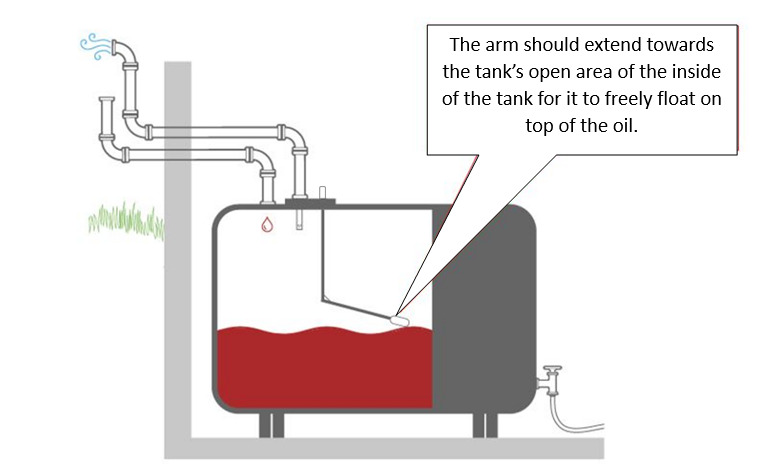
How to Read Your Float Gauge
The purpose of the disc in the plastic cylinder is to give you an approximate level of how many gallons of oil are in your tank. It’s important to know that the purpose of a float gauge is only to give you an approximate reading. The reading the gauge gives you will never be 100% accurate.
Another important part of using a float gauge is knowing what size tank you have. Most oil tanks tend to be either 275-gallon or 330-gallon tanks. By using the float gauge, you will need to know what the size of your tank is.
Pro Tip: 275-gallon fuel tanks will tend to measure around five feet long. However, 330-gallon tanks will usually measure around six feet long.
Once you are aware of your tank size, you’ll be able to understand what your float gauge is reading. The levels that the float gauge will read are primarily: 1/4, 1/2, 3/4, or full. You can check out our heating oil tank chart to determine how many gallons are actually in your tank based on that reading.
Just to be on the safe side, however, always make sure to order oil when your tank hits a quarter full, especially when using a float gauge.
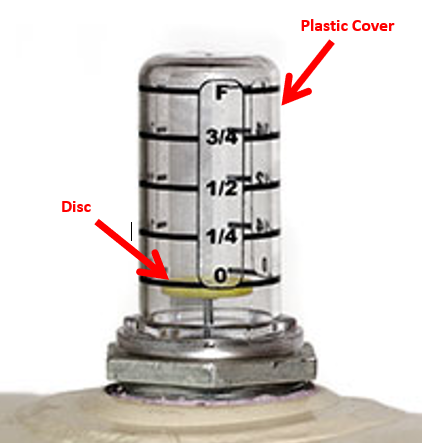
How Accurate is the Float Gauge?
Unfortunately, a float-style gauge is not going to be an accurate device to measure how much oil is in the tank. There are two distinct reasons for this.
Float Gauges Tend to Go Bad Over Time
After several years of sitting in heating oil, float gauges will build up sludge all over the bobber over time. This can weigh the bobber down, causing the gauge to read inaccurately and not work properly. In the below photo, you’ll see what a build-up of sludge will look like on the float.
Additionally, the float gauge can sometimes get stuck. If the gauge moves even the slightest, the float arm and bobber can stick on the side of the oil tank, causing the level the float reads to remain stagnant.
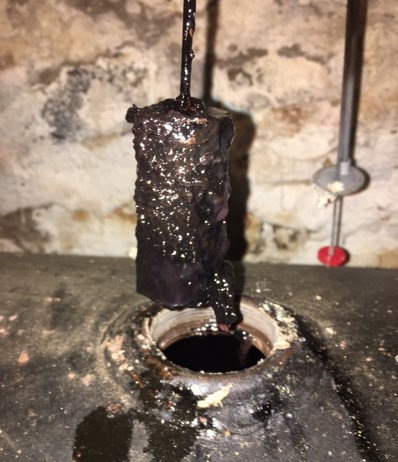
Float Gauges Don’t Put Tank Geometry into Consideration
Due to float gauge arms only being able to move up and down, they do not take tank curvature into account. While the middle of the oil tanks tend to be straight up and down, the top and bottoms of the tanks are curved. Once the oil in the tank hits the curved portions, the float gauge will look as if you are using significantly more oil once you get to the bottom 1/4th of the tank. When the float reaches that bottom 1/4th of the tank, you will see it going down faster.
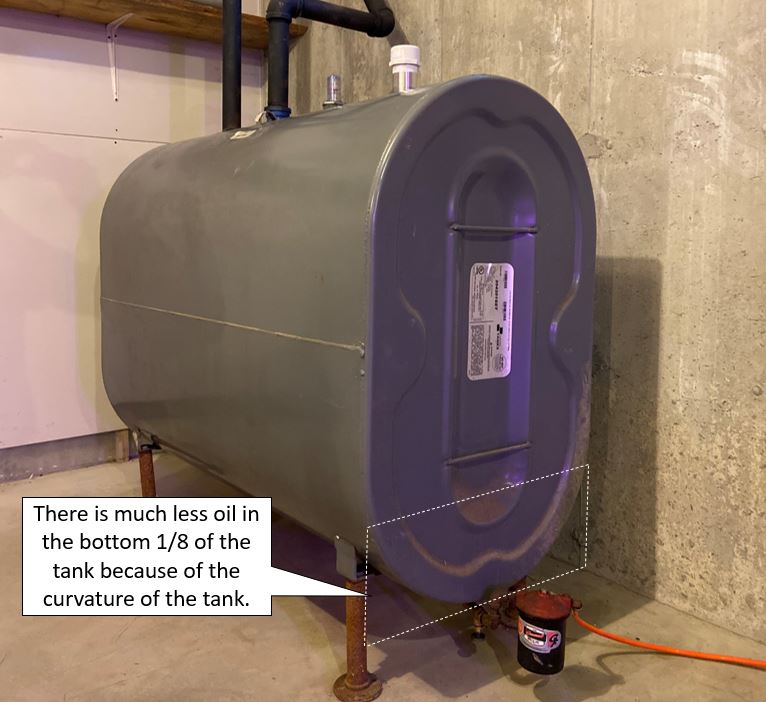
The More Accurate Heating Oil Tank Gauge
With the introduction of the Smart Oil Gauge, heating oil users now have a more reliable option to monitor their oil tanks. The Smart Oil Gauge uses an Ultrasonic sensor that detects the oil level in the tank. The gauge also knows the curvature of your tank after completing its initial setup process. It will output a specific number of gallons in the oil tank instead of just giving you an approximate level.
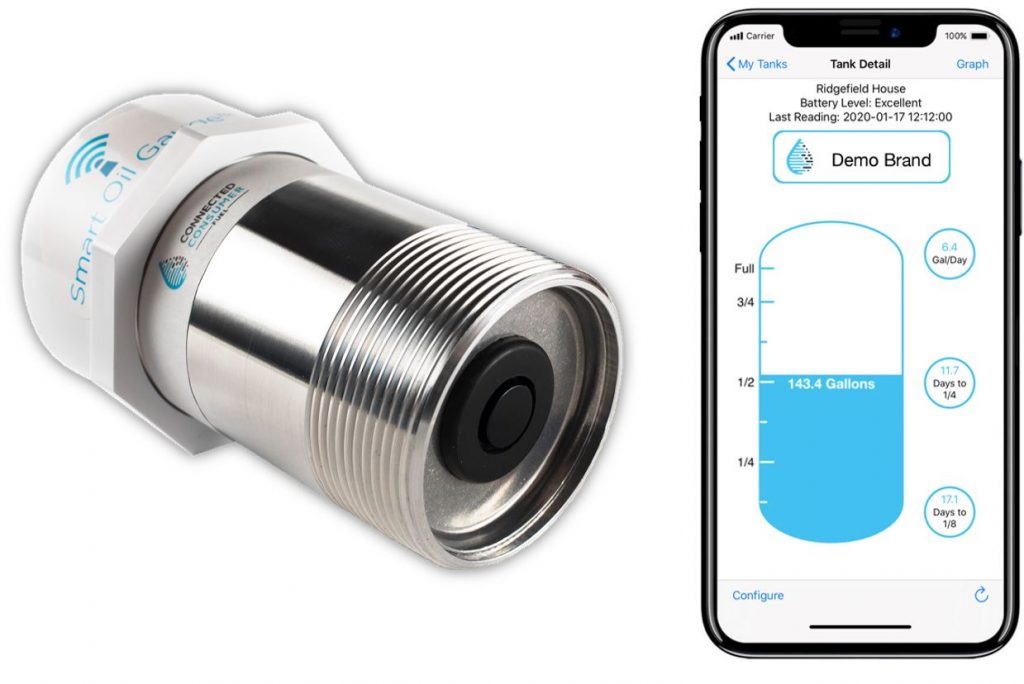
Track Your Usage and More with the Smart Oil Gauge
The Smart Oil Gauge will record your readings throughout the day, and you’ll be able to get an idea of how much heating oil you are using daily, weekly, monthly, or yearly! Here is just a small list of some of the benefits that come with the Smart Oil Gauge:
- Current Oil Usage (Gallons Per Hour and Gallons Per Day)
- Days Until you’ll be at 1/4 tank
- Days until 1/8 tank
- Total Gallons used per day, week, month or year
Track Monthly Usage and Reorder Heating Oil Quickly Online
With the use of the smart oil gauge, you can keep track of how much heating oil you are using. The app also directly connects to our FuelSnap website, so you can order oil directly from the app if you’re low. Using this information, you’ll be able to schedule your next order of home heating oil.
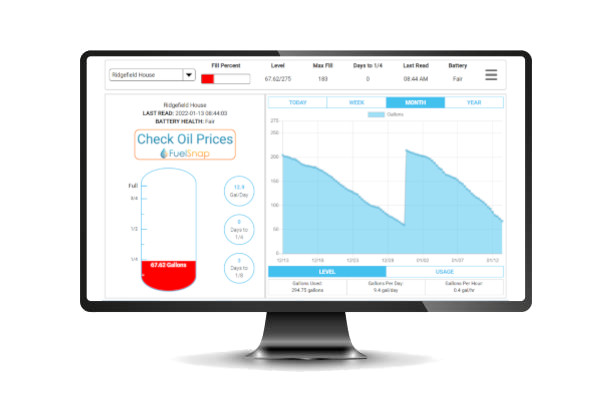
An Accurate Heating Oil Gauge
While the float gauge might not be accurate, the Smart Oil Gauge is! The only limitation that it has is that it can’t give an accurate reading within the top 8″ of the tank. This is the gauge’s “blind spot”. We have a more in-depth write-up regarding this blind spot here.
However, below that 8″ blind spot the gauge is incredibly accurate! Additionally, if you would like to keep your float gauge installed into your tank with the Smart Oil Gauge, then you can! The float can stay in the tank so long as you have an extra fitting to install the Smart Oil Gauge into! You’ll be able to look at the exact reading through our app on your phone! It will tell you how many gallons you have, and when you’ll run out!
Happy Heating,



